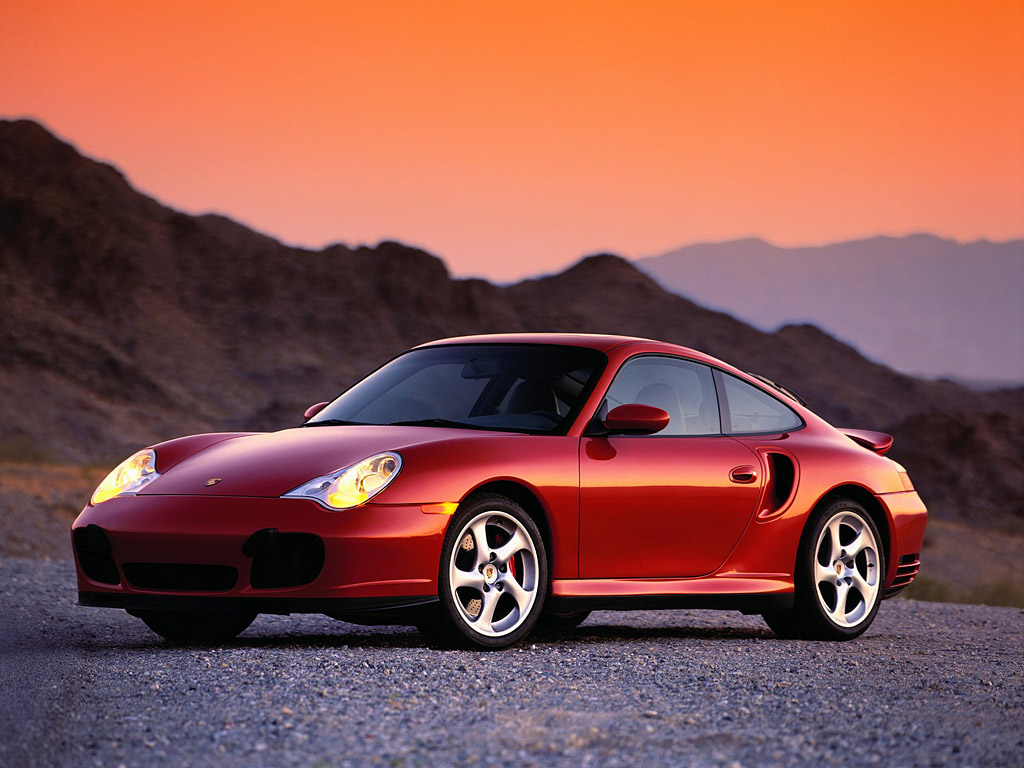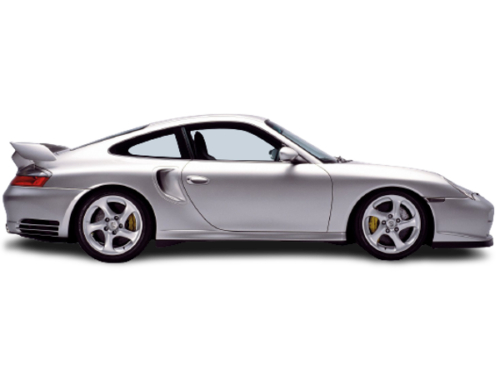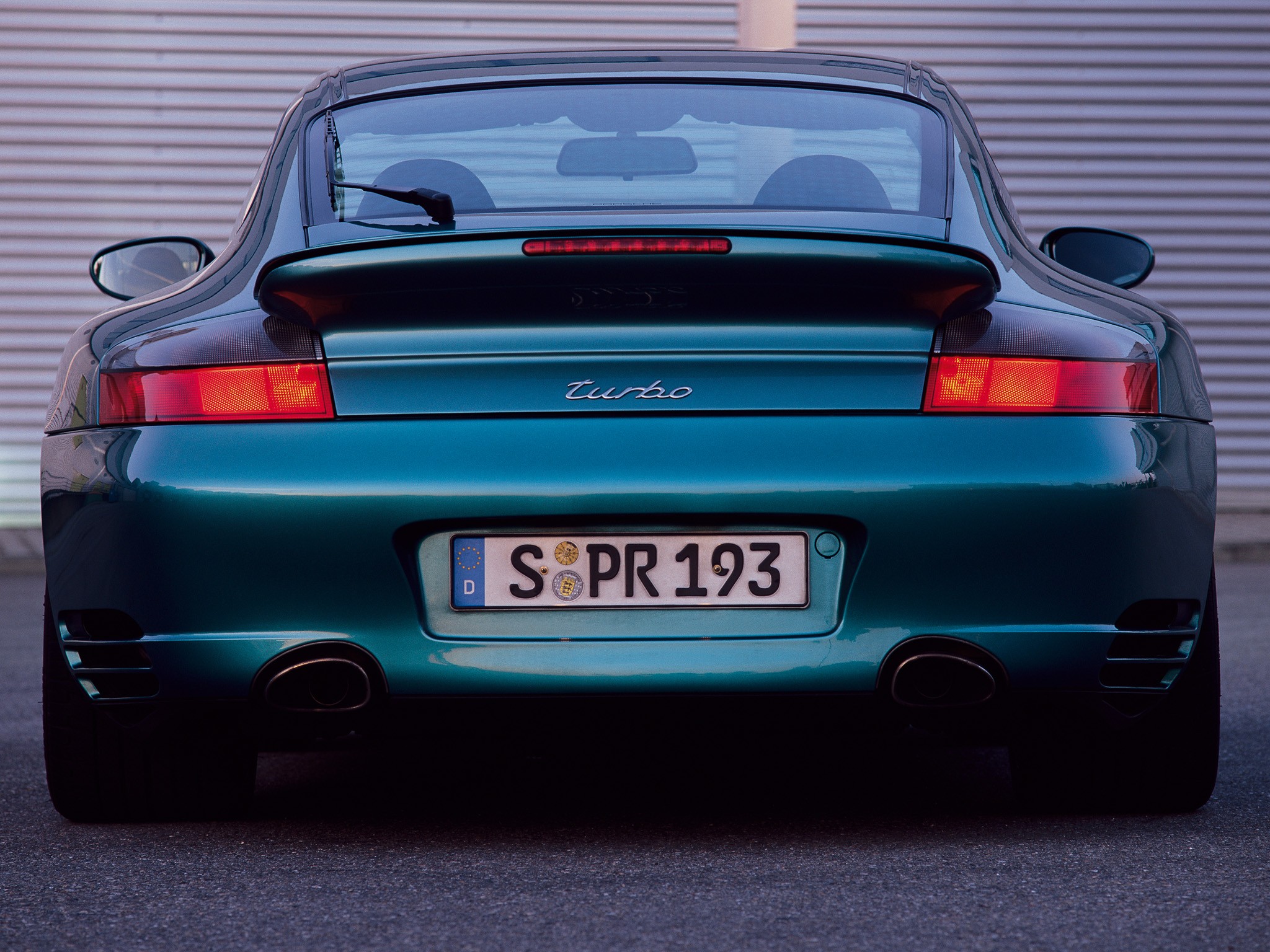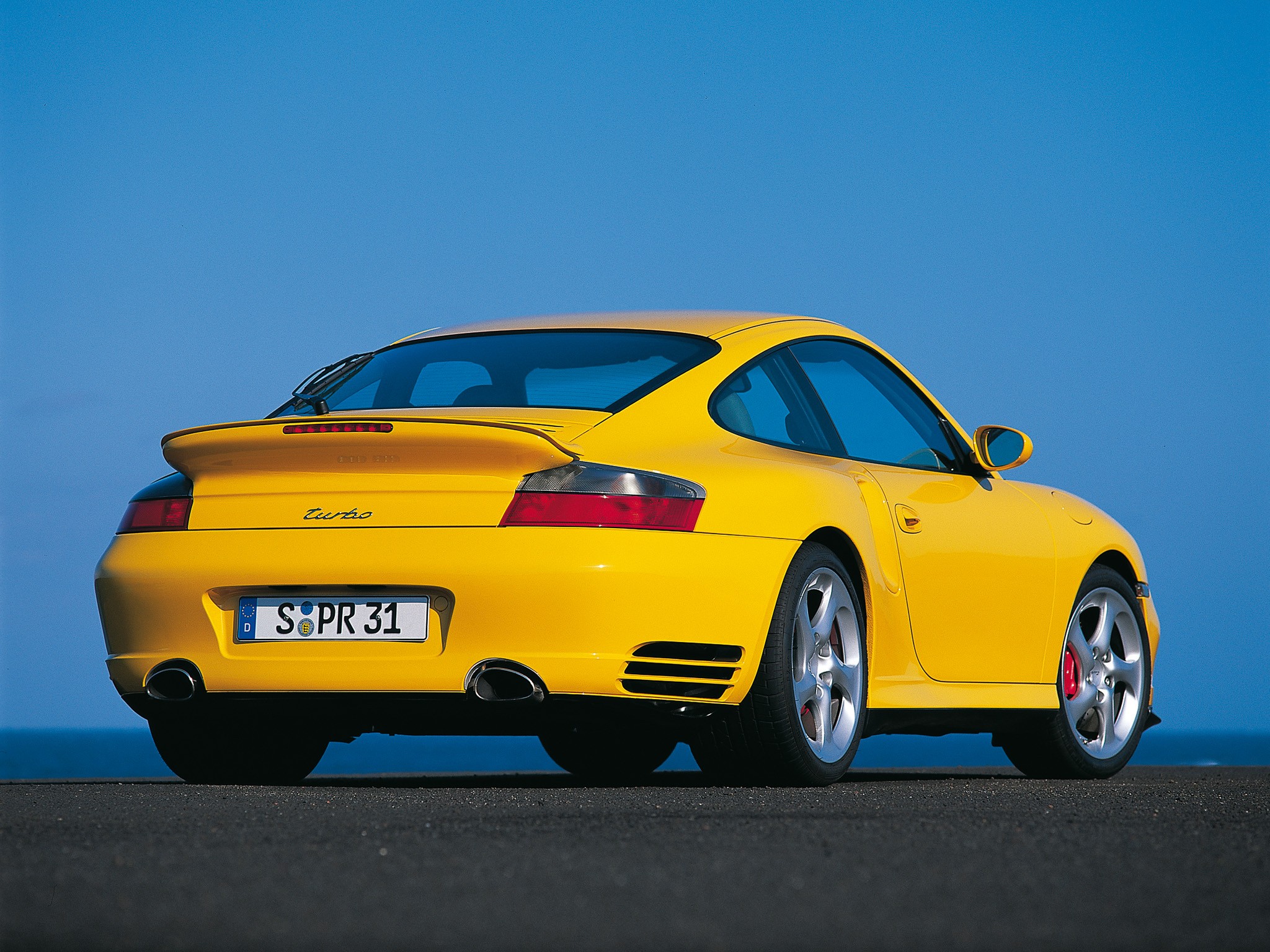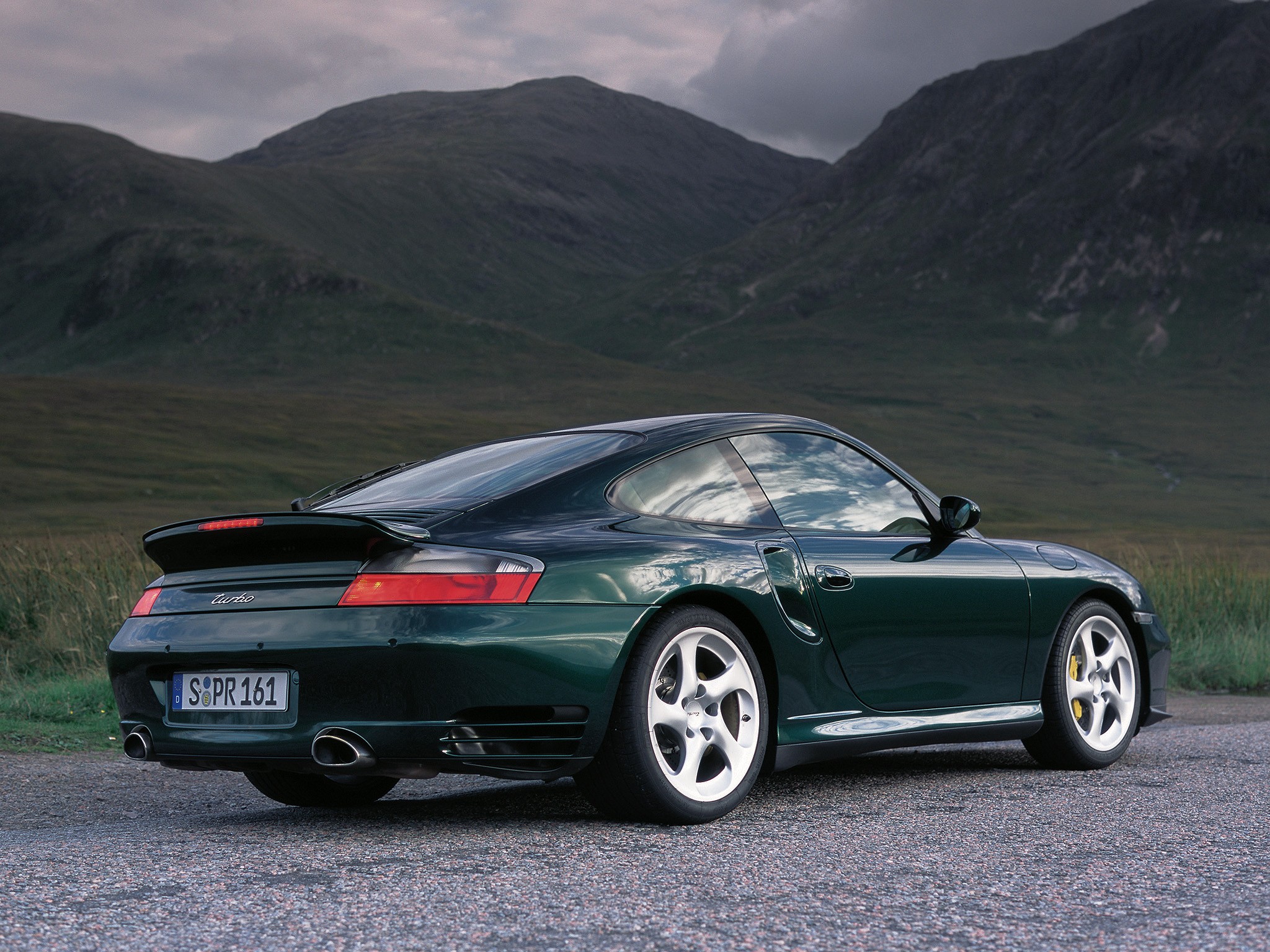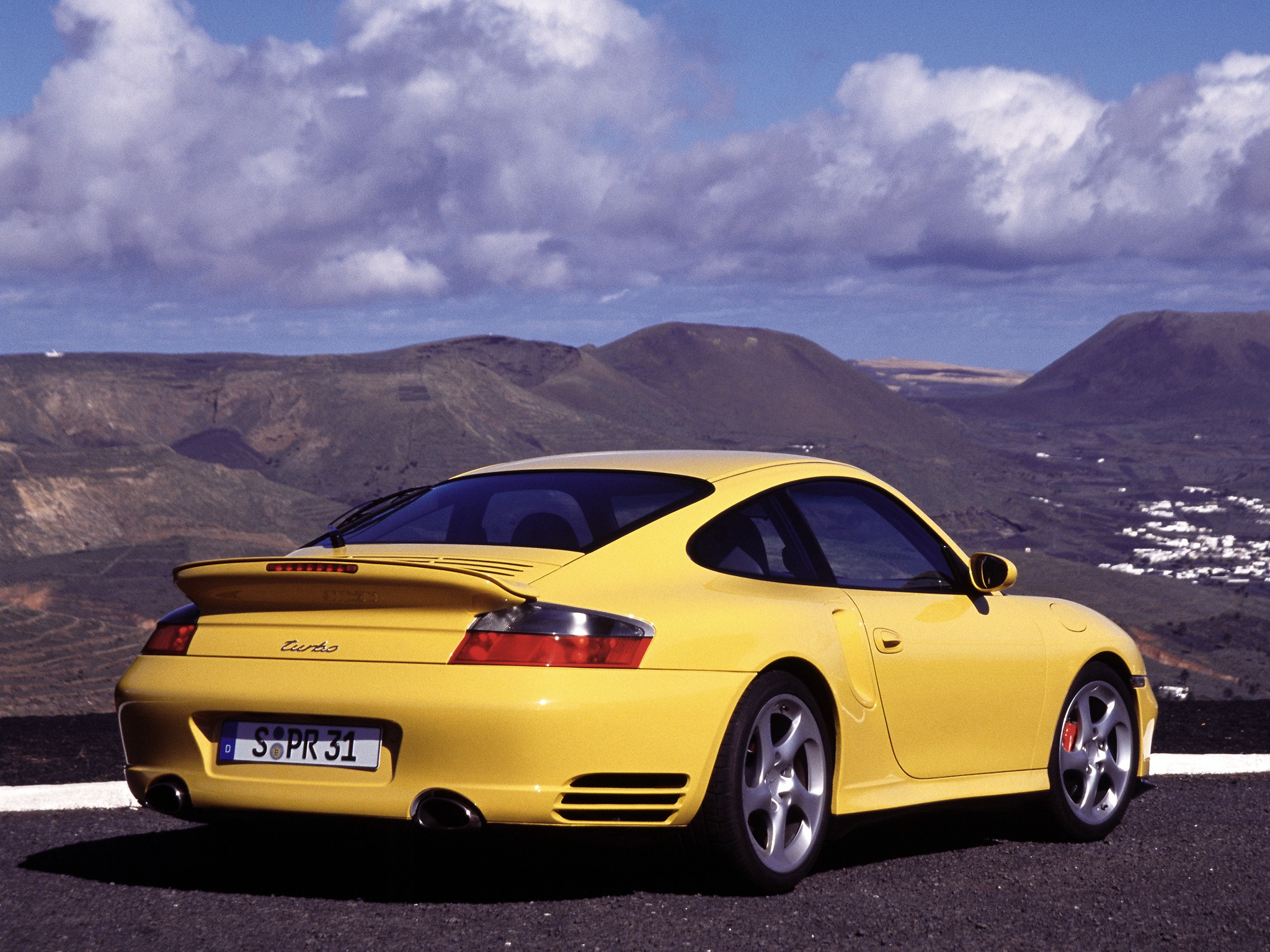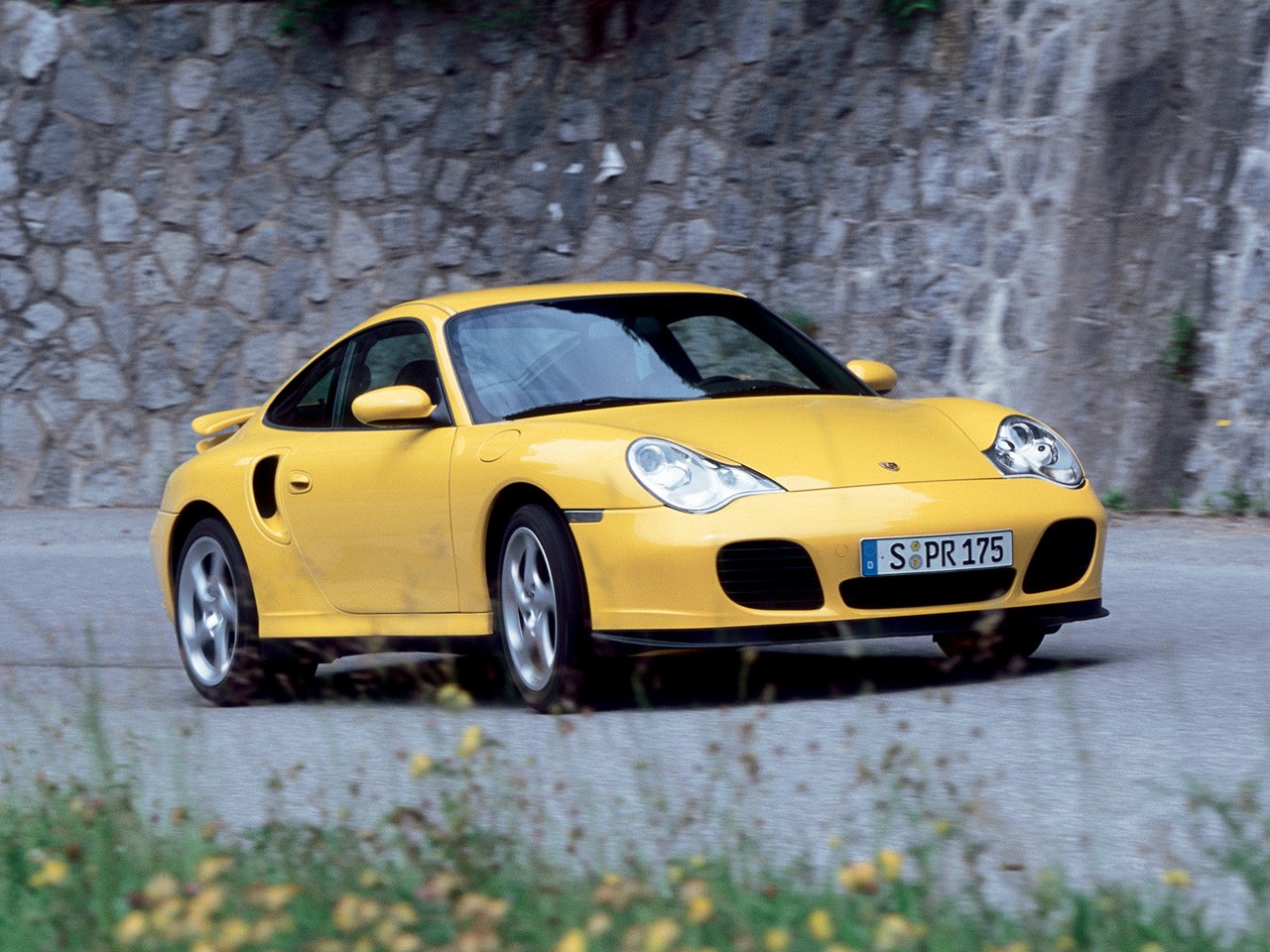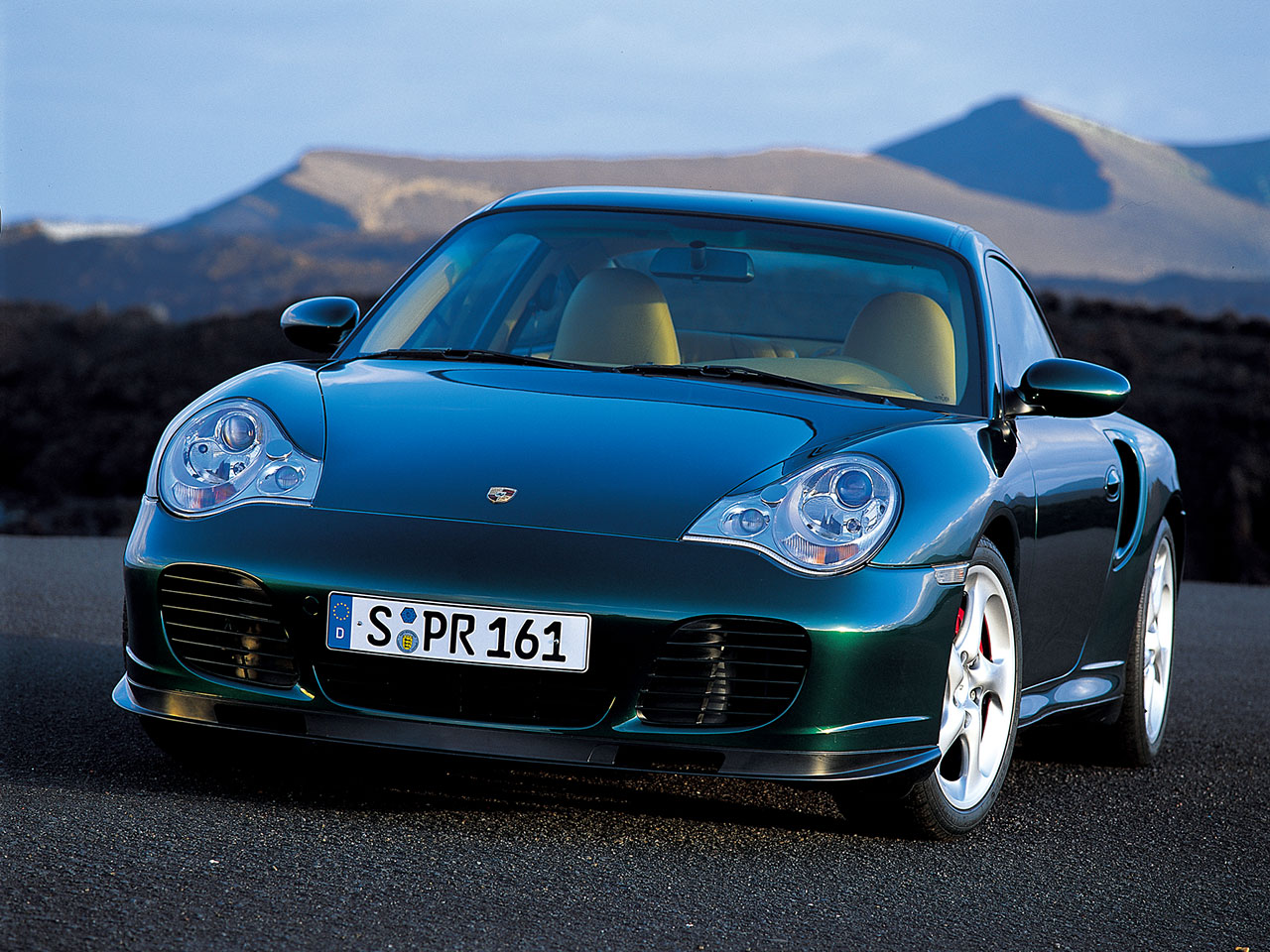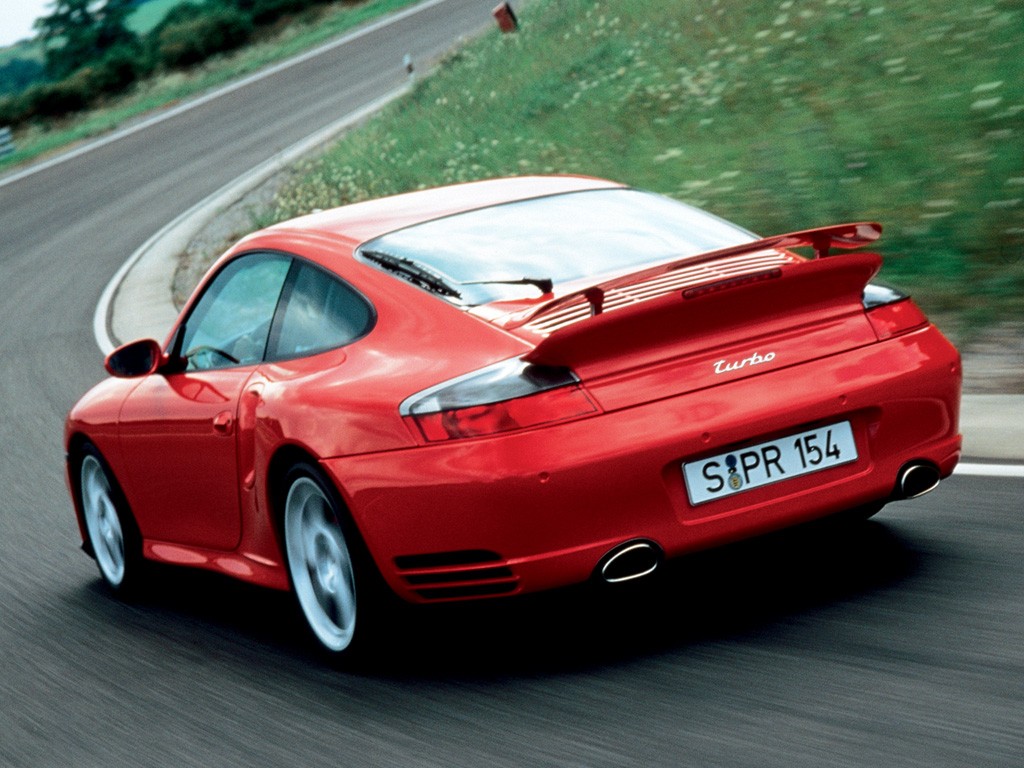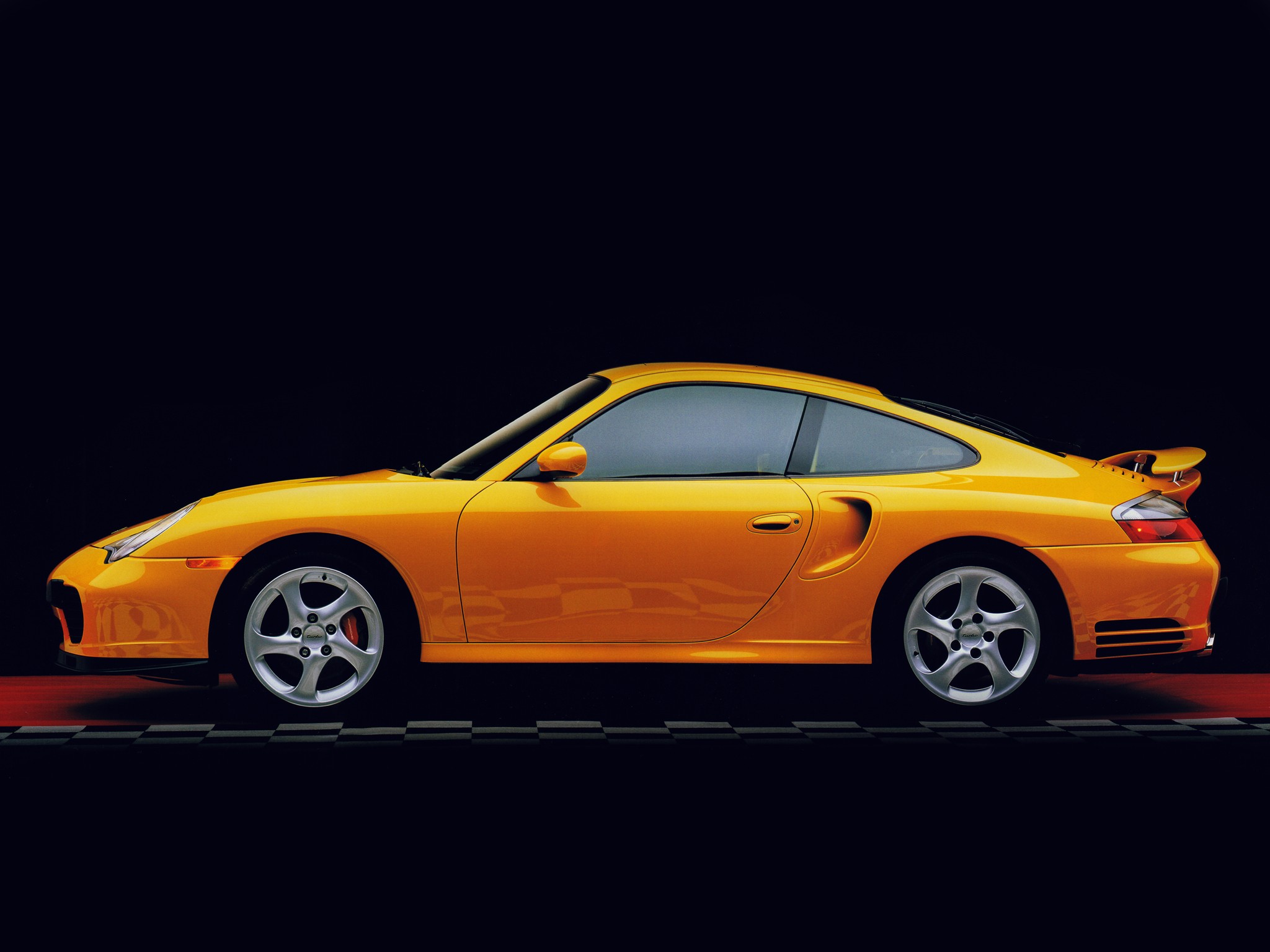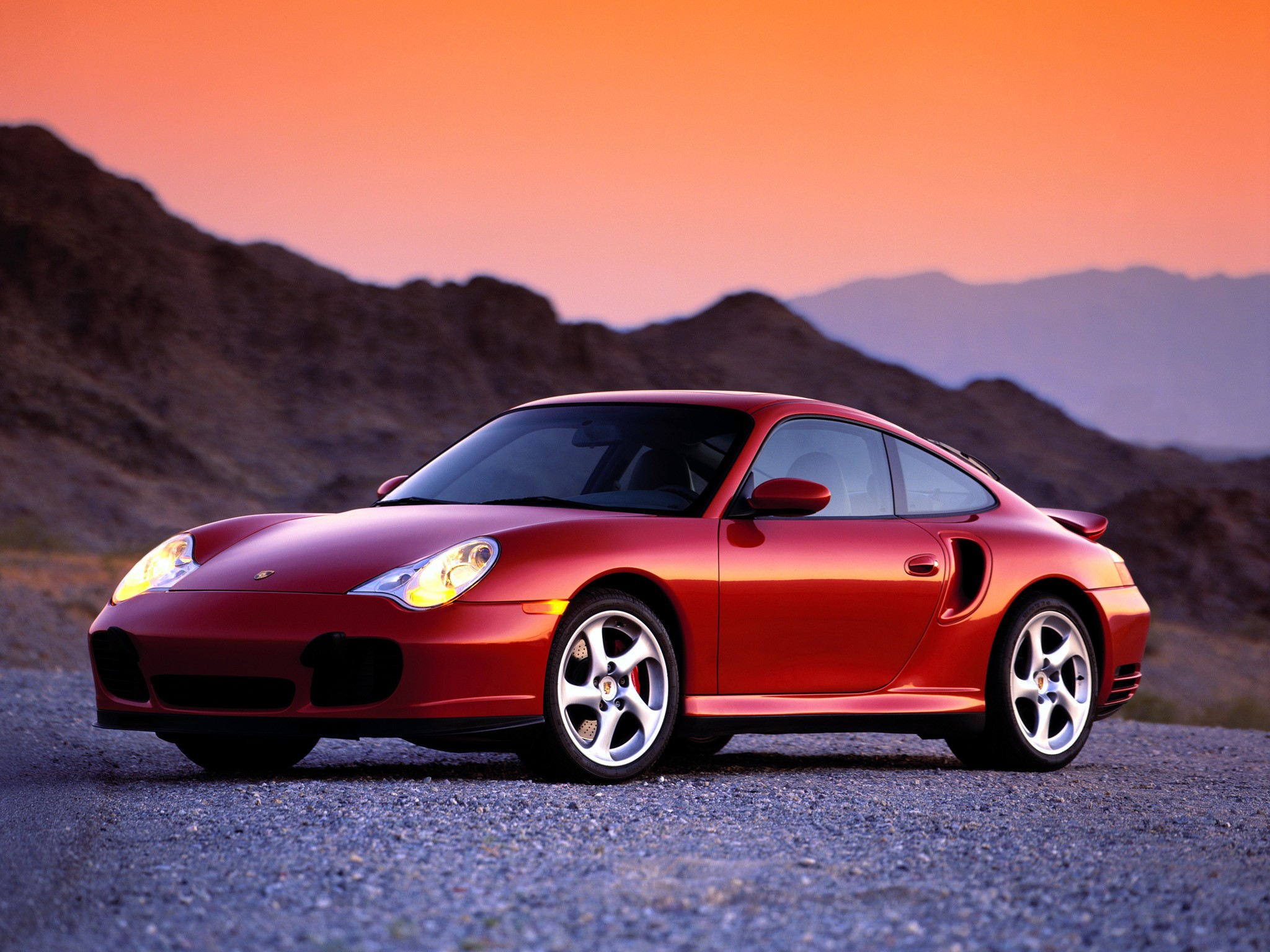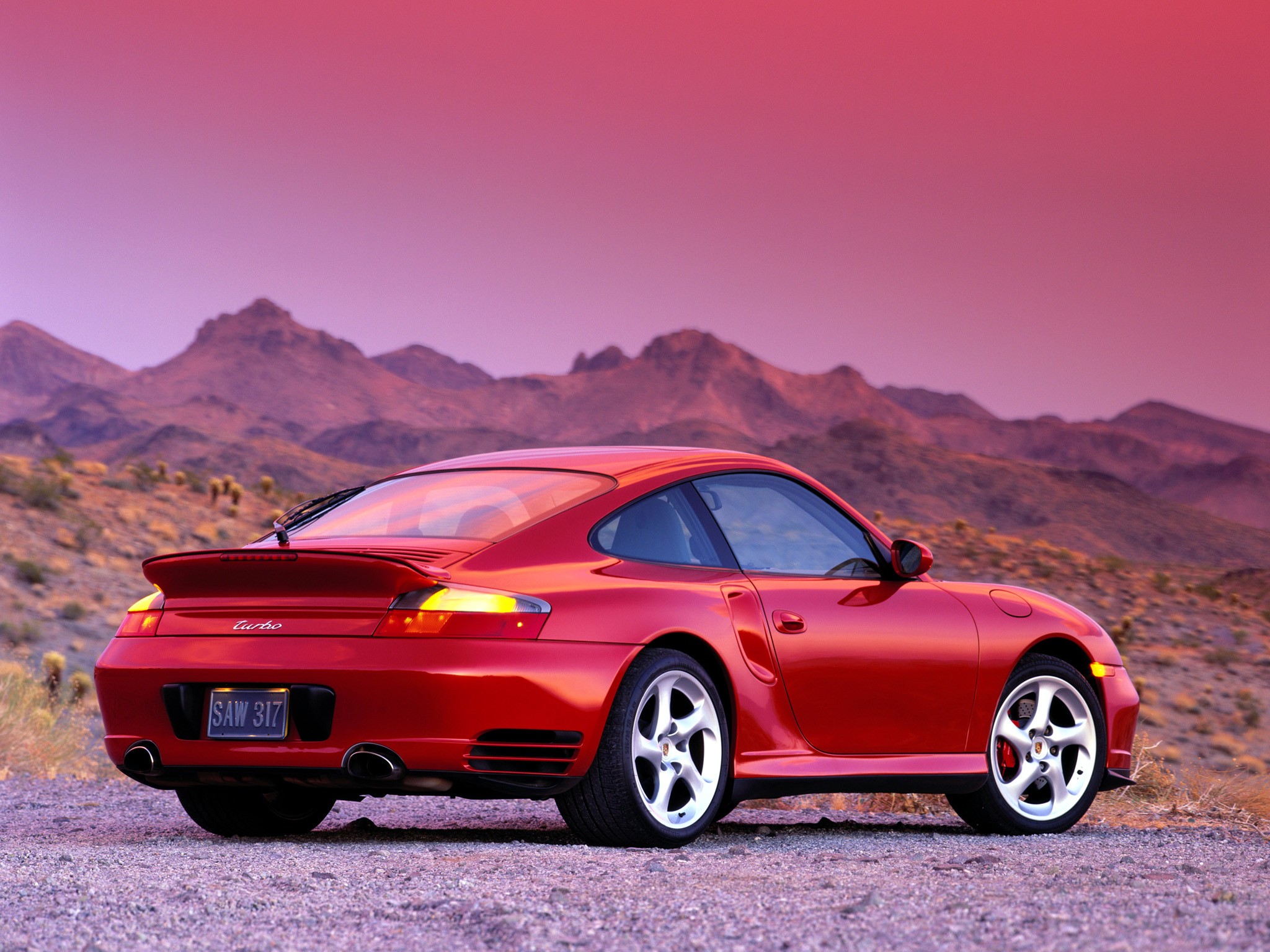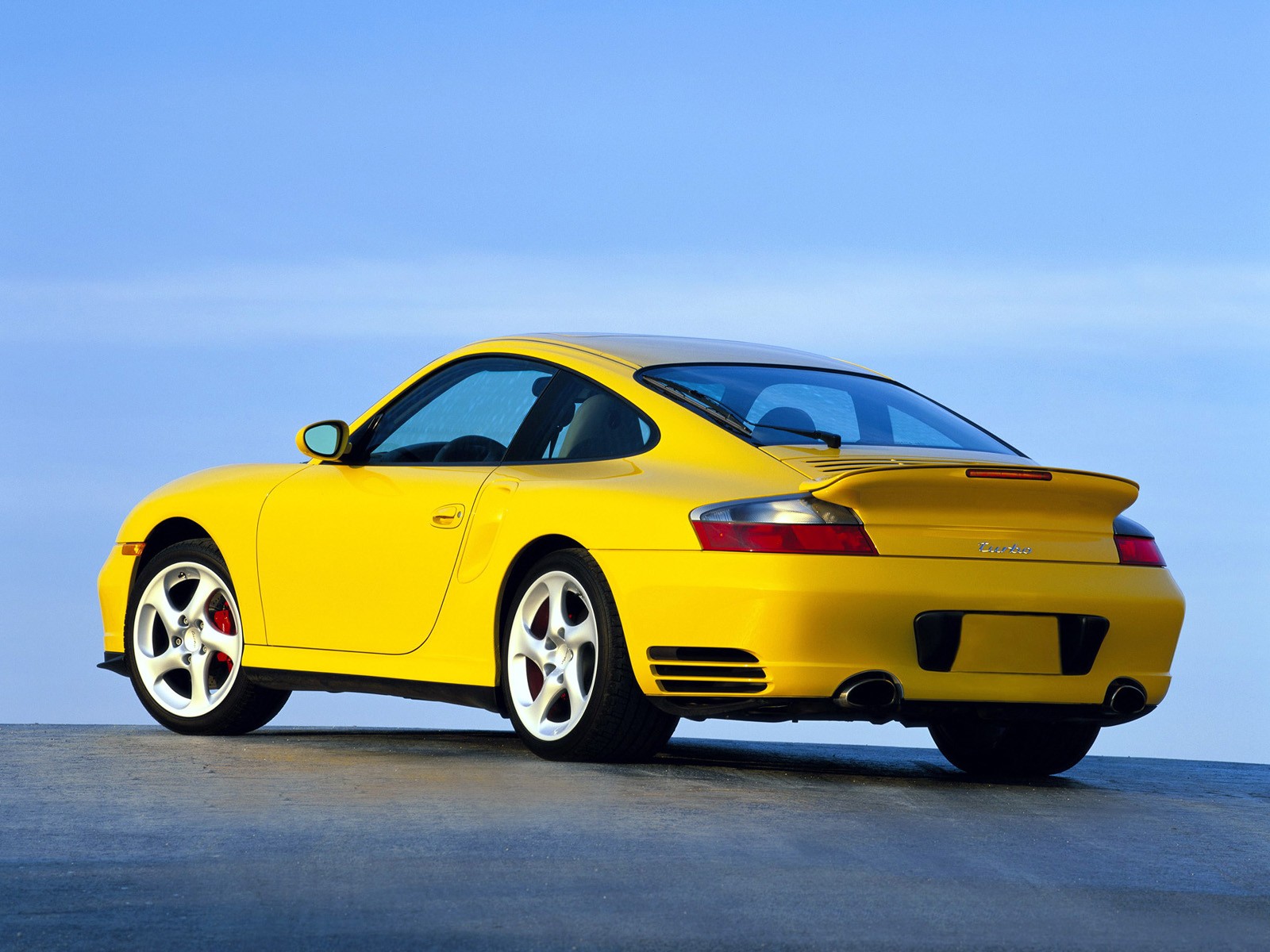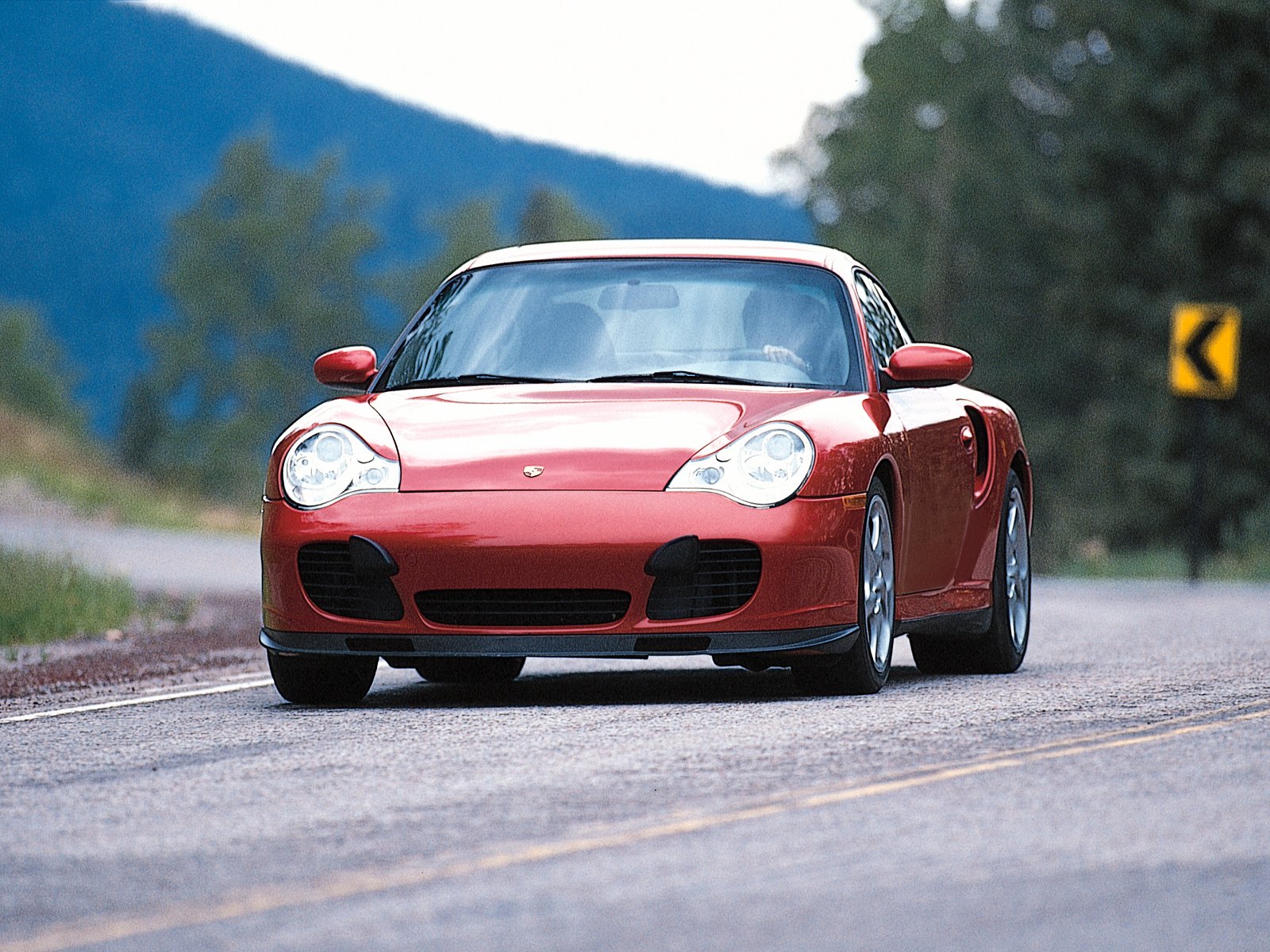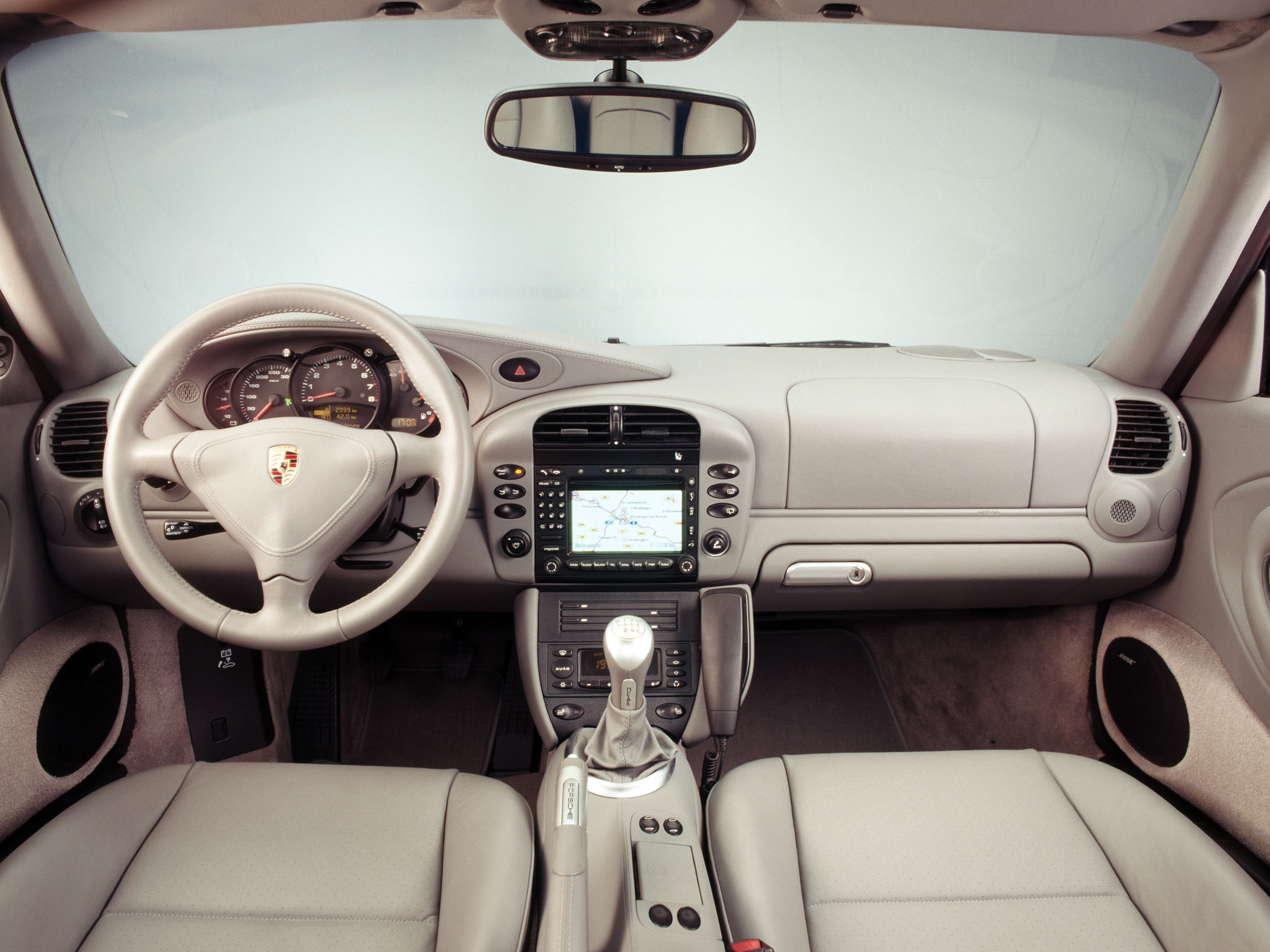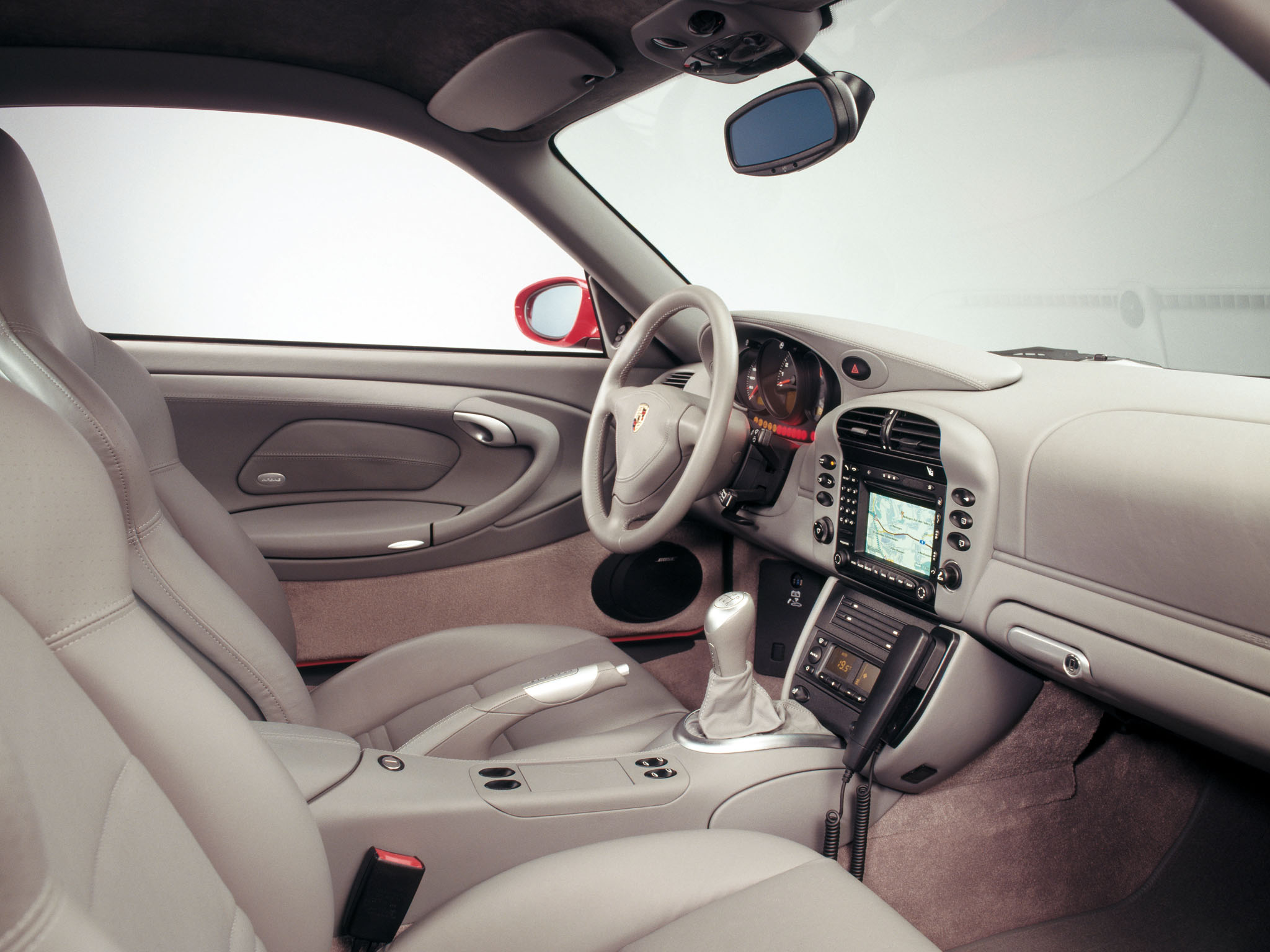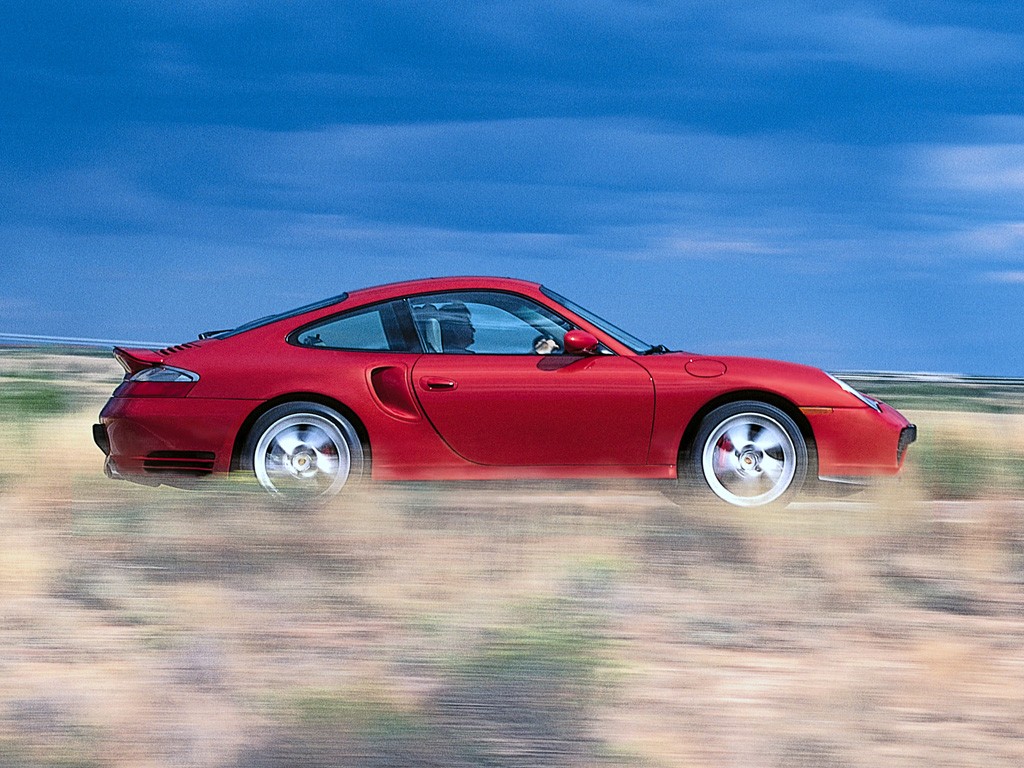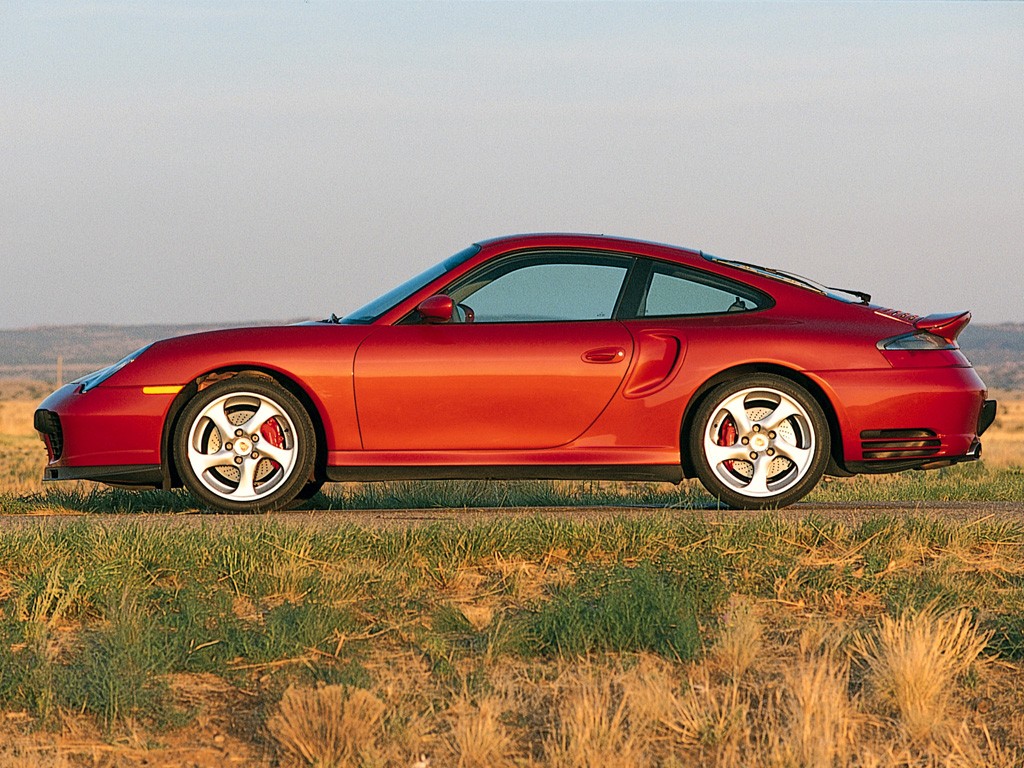(2001 – 2005) Porsche 911 Turbo (996) – Ultimate Guide
The 996 Turbo debuted at the Frankfurt Auto show in September 1999 and went on sale in the US in summer of 2000 as a 2001 model. It wore a revised, wider stance to manage the wider tires meant for the additional horsepower. The standard Turbo offered 415 horsepower from the turbocharged Mezger engine, driven through all four wheels. An optional package (known as the X50 Powerkit) added larger turbochargers, among other changes, to bump horsepower to 444. Although the Turbo continued through to the 2005 model year, a 996 Turbo S version was introduced that year to commemorate the end of 996 generation.
Originally, the 996 Turbo developed 415 bhp @ 6000 rpm and torque of 415 ft lbs @ 2700 rpm. And, in addition to a 6-speed manual or optional 5-speed automatic, all 996 Turbos came with all-wheel drive. 0-60 mph took only 4 seconds flat and the quarter mile was over in just 12.4 seconds. To help with high-speed stability, US models had an electronically-adjusting rear spoiler, helping the 996 Turbo hit a top speed of 189 mph.
The 996 Turbo was the first water-cooled Porsche Turbo and it was an instant hit for the German car-maker. When it was introduced, it suddenly made its competition look outdated. Its all-wheel-drive system and the mix of performance and comfort it added, made it one of the best choices on the market, and new buyers didn’t care too much about the fact that it didn’t feature an air-cooled engine. It was faster than most of its competitors, and it was almost as comfortable as a British GT car.
From the outside, the front bumper attracted views due to its large three air-intakes needed to cool the radiators. On its sides, another pair of air-intakes needed to feed the big turbochargers were installed in front of the rear wheels. The wide rear fenders looked muscular. A fixed-wing was added on top of the engine lid.
Inside, the Porsche Turbo featured the same interior as the Carrera 4 S, with sports seats in the front and two seats in the back fit for small dogs. Some standard features were available only as an option for the other 911 models, including the Alcantara roof trim. The navigation system was available only at extra cost.
The 996 Turbo was fitted with an engine carried-over from the Porsche GT3 race-car and detuned for street use. It was mated as standard with an all-wheel-drive system, and that led to a smaller luggage compartment and smaller fuel tank. A 5-speed automatic gearbox (Tiptronic) with manual override to change gears was offered as an option. Paddle-shifters were installed on the vehicles fitted with that gearbox.


